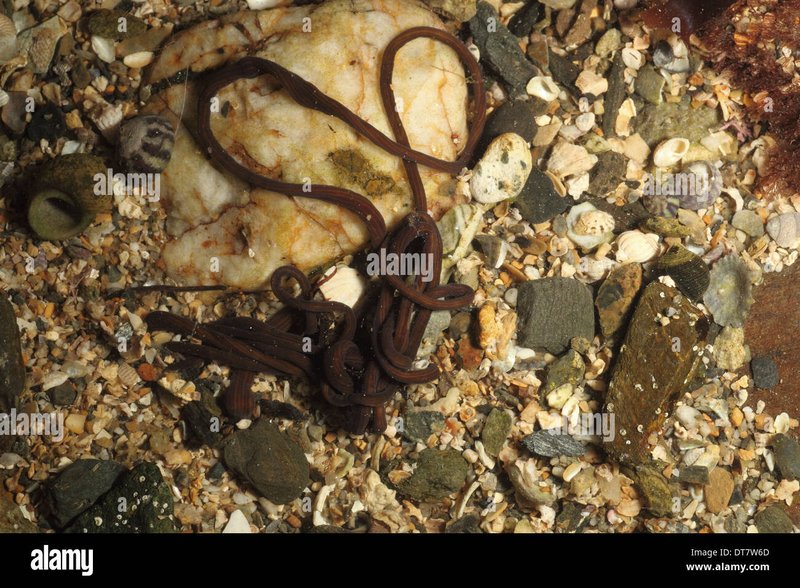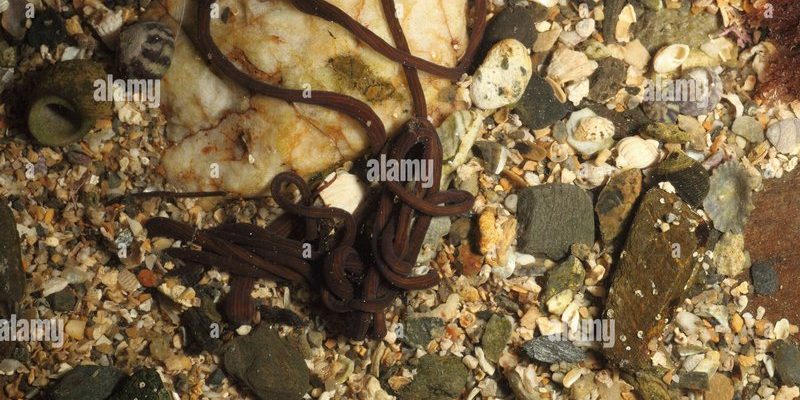
Bootlace worms, also known as *Lineus longissimus*, are the longest worms in the world, capable of stretching up to 180 feet! They love to burrow into muddy and sandy shores, making them quite the unique marine inhabitant. Now, as the tide goes out, things can get a bit tricky for them. They face the risk of desiccation, which is just a fancy way of saying they could dry out if they’re not careful. So, how exactly do these remarkable creatures avoid becoming worm strips on the beach?
The Challenge of Desiccation
When the tide recedes, bootlace worms are left exposed to air and heat. This environment can quickly lead to desiccation. For many marine species, this is a significant issue, as most sea creatures aren’t built to handle the dry air that comes with low tide. Think about it like leaving your favorite candy out in the open—it’ll certainly lose its sweetness and texture.
Bootlace worms, however, have evolved strategies that allow them to manage their moisture levels effectively. Being part of the annelid family, they have a slimy coating that helps retain moisture. This coating is vital. It’s almost like an invisible shield that works hard to keep their bodies hydrated. But that’s just the beginning of their survival tactics.
Adaptations for Moisture Retention
Let’s look at what makes these worms so special. Bootlace worms can absorb water from their surroundings, which is crucial when they’re out of their aquatic home. Their skin is permeable and allows for gas exchange and moisture absorption.
In addition to this natural ability, when they sense that the tide is going out, they burrow deeper into the sand or mud. This behavior can be likened to putting on a protective jacket when the weather gets chilly. By digging down, they shield themselves from the sun and wind, both of which can sap their moisture more quickly. Think of it as their own little underground water park!
The Role of Mucus Secretion
Another fascinating aspect of bootlace worms is their ability to secrete mucus. This slimy material plays a significant role in their survival. When the worms sense they’re drying out, they ramp up their mucus production. The mucus not only acts as a barrier against air but also traps moisture close to their skin.
You might say that mucus is their best friend during these tough times. It’s like having a trusty umbrella on a rainy day—always there to protect you from the elements. This mucus layer is essential, especially during extended periods of low tide when the risk of desiccation is at its highest.
Behavioral Strategies to Stay Alive
In addition to their physical adaptations, bootlace worms have some smart behavioral strategies. When the tide is low, they often stay still, reducing their metabolic rate to conserve energy and moisture. This is like taking a breather during a long run; it helps them minimize water loss.
Moreover, they can sense changes in their environment, such as humidity levels and temperature, allowing them to react swiftly. If conditions start to feel too dry, they’ll burrow down deeper or even curl into a tight ball to retain moisture. It’s all about playing the survival game and knowing when to adapt.
Ecological Importance of Bootlace Worms
Okay, we’ve talked about how bootlace worms avoid drying out, but why does this matter? These resilient worms play a crucial role in their ecosystem. They help keep the sediment healthy by aerating the soil as they burrow and can serve as food for various predators, including fish and birds.
Moreover, they contribute to nutrient cycling within their habitats. The more we understand how these worms interact with their environment, the better we can appreciate their part in maintaining the balance of coastal ecosystems. You could say they’re the unsung heroes of the beach!
Bootlace worms are a remarkable example of how life adapts to challenging conditions. Their strategies for avoiding desiccation during low tide are nothing short of impressive. From their moisture-retaining mucus to their clever behaviors, these worms have mastered the art of survival in a changing environment.
When you think about the next time you see a bootlace worm at the beach, remember how it beats the odds against drying out. It’s a reminder of nature’s resilience and creativity, constantly finding ways to thrive, even in tough spots. So, whether you’re a beachgoer, a budding marine biologist, or just someone curious about the ocean, these little creatures have a fascinating story to tell—and they certainly keep the coastal environment alive and well!

